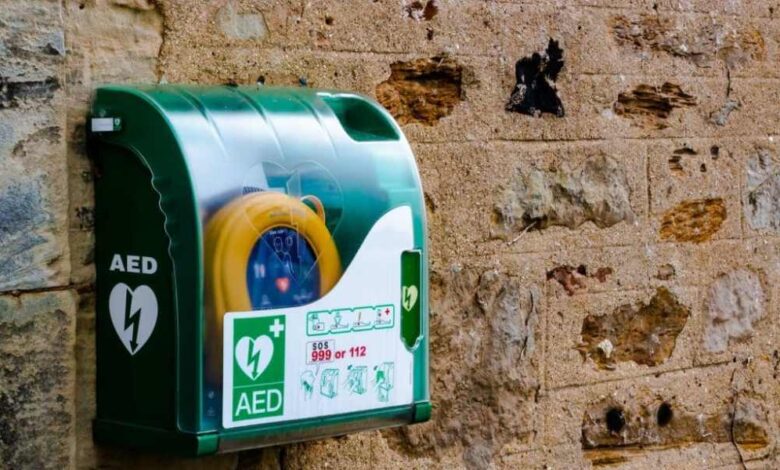Basic Life Support Certification That Includes AED Training

Medical emergencies can happen anywhere at work, at home, or in public, without any warning. Knowing what to do and having the confidence to do it can make a big difference in those first few minutes. Individuals who hold Basic Life Support Certification, especially those with additional training in using an Automated External Defibrillator (AED), possess the necessary skills to remain calm and act quickly in life-threatening situations.
According to the Bureau of Labor, with a projected opening of 1.9 million this year, healthcare jobs are expected to grow faster than average from 2023 to 2033. This certification isn’t limited to healthcare professionals; it’s designed for anyone who wants to be prepared to step in, offer assistance, and potentially save a life when it matters most.
What Is Basic Life Support?
Basic Life Support (BLS) is essential emergency care for individuals in life-threatening situations such as cardiac arrest, difficulty breathing, or choking. Medical students, nurses, paramedics, and other healthcare workers often require BLS training. However, people outside the medical field are also pursuing it, including teachers, personal trainers, security guards, coaches, and parents.
Why? Because emergencies don’t only happen in hospitals, they happen in schools, homes, parks, and workplaces. Out-of-hospital cardiac arrests (OHCAs) are a significant public health concern. According to NCBI, the global incidence of OHCA in adults is 54.6 per 100,000 person-years.
As a result, professionals across various industries are finding BLS training increasingly valuable. BLS gives you the confidence and skills needed to act quickly and effectively when every second counts.
AED and Its Importance
An AED, or Automated External Defibrillator, is a portable medical device that helps individuals experiencing cardiac arrest. It monitors the heart’s rhythm and, if necessary, delivers a controlled electric shock to restore a normal rhythm.
AEDs are designed to be easy to use. Once the device is turned on, it provides clear, step-by-step voice instructions. After the pads are applied to the patient’s chest, the AED charges, analyzes the heart rhythm, and determines whether a shock is needed, all automatically.
Patients experiencing OHCA require early defibrillation for the best chance of survival. Using an AED within the first few minutes significantly increases survival rates. That’s why learning both BLS and AED use is so important. It equips you with the knowledge and tools to act quickly and confidently in a life-threatening emergency.
What Does BLS Training Include?
Basic life support certification teaches essential emergency techniques that can save lives. The best part is that it’s taught in a way that’s easy to understand, using real-life examples.
- CPR and AED for Adults, Children, and Infants
One of the primary objectives of BLS is to teach individuals how to perform cardiopulmonary resuscitation (CPR). You will learn how to perform CPR and use an automated external defibrillator (AED) on adults, children, and infants, as techniques vary slightly depending on the age group. Training covers how to perform chest compressions, the correct compression depth, and how to administer rescue breaths when needed.
- Clearing Airway Obstructions (Choking Response)
You will also learn how to assist someone who is choking. This includes techniques such as abdominal thrusts (the Heimlich maneuver) and back blows, tailored to the age and condition of the person. It could be an adult at the dinner table or a small child who has swallowed an object.
If someone has a pulse but is breathing irregularly, rescue breathing can help maintain oxygen flow until emergency services arrive. You will learn how to deliver consistent breaths while keeping the airway open, typically using a barrier device for safety.
Emergencies often involve multiple bystanders. BLS training teaches you how to work effectively as a team, assigning tasks like calling 911, performing compressions, and setting up the AED. In high-pressure situations, clear communication and coordinated teamwork can make all the difference.
What to Expect from a BLS and AED Certification Course?
If you’re thinking about taking the Basic Life Support certification with AED training, here’s what you can expect. The process is straightforward, valuable, and designed for people, whether you work in healthcare or simply want to be prepared.
Most BLS + AED certification courses take between four and six hours to complete. Some providers offer a blended option, where you complete the theory online and then attend a shorter in-person session for skills practice. Others offer fully in-person classes that include lectures, videos, and hands-on activities.
Throughout the course, you’ll get hands-on practice using CPR manikins representing adults, children, and infants. You’ll also use a training model to learn how to operate an AED. This practical experience builds muscle memory and confidence, so you’re better prepared for real-life situations.
- Practicing Emergency Scenarios
In addition to reading and watching videos, you’ll actively engage with the content. Instructors typically set up realistic practice scenarios to help you apply what you’ve learned. These drills train you to stay calm and respond quickly and effectively under pressure.
At the end of the course, you’ll take a brief written test to assess your understanding of key steps and safety procedures. You’ll also demonstrate to your instructor that you know how to perform CPR and use an AED. Don’t worry. This step helps reinforce your knowledge and boosts retention.
- Certification and Renewal
After passing the course, you’ll receive a Basic Life Support certification valid for two years. You can receive it digitally or in printed form. To maintain your certification, you’ll need to complete a refresher course before it expires. Many people choose to refresh their skills annually to stay sharp. It only takes a few hours, but the impact could last a lifetime.
Strengthen Your Medical Skills with BLS Training
Obtaining basic life support certification and AED certification is more than just acquiring a skill; it’s about being prepared for emergencies. The training instills a sense of responsibility, strengthens your ability to act under pressure, and builds lasting confidence. Whether you’re helping a loved one at home or a stranger in public, being able to act immediately can change a life. Getting certified in a healthcare CPR/AED course means being ready, being compassionate, and being able to save a life when it matters most.





